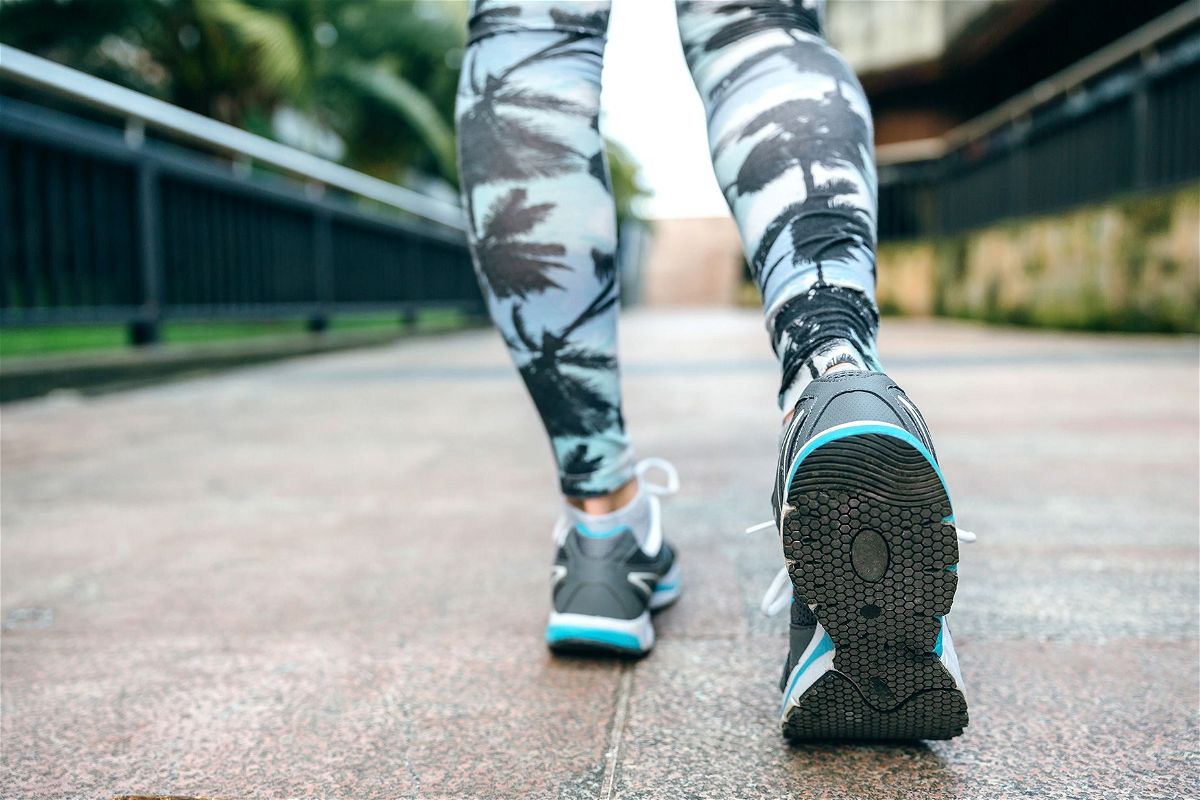The significant health benefits of walking backward

Originally Published: 03 NOV 23 12:31 ET Updated: 03 NOV 23 13:16 ET By Melanie Radzicki McManus, CNN
(CNN) — Editor’s note: Before beginning any new exercise program, consult your doctor. Stop immediately if you experience pain.
Head into any gym, and you may find someone walking backward on a treadmill or pedaling in reverse on an elliptical machine. While some may be employing reverse motion as part of a physical therapy regimen, others may be doing so to boost their physical fitness and overall health.
“I think it’s amazing to add in some backwards motion to your day,” said Grayson Wickham, a physical therapist at Lux Physical Therapy and Functional Medicine in New York City. “People are sitting way too much today, plus they lack varied movement.”
Quite a few studies have been done on the potential benefits of retro walking, a common term for walking backward. Participants who walked backward on a treadmill for 30 minutes at a time over four weeks increased their balance, walking pace and cardiopulmonary fitness, according to a March 2021 study.
In addition, a group of women decreased their body fat and boosted their cardiorespiratory fitness after a six-week program of backward running and walking, according to a clinical trial, the results of which were published in an April 2005 issue of the International Journal of Sports Medicine.
Other studies indicate backward motion may help those with knee osteoarthritis and chronic back pain, plus improve gait and balance.
Retro walking may even sharpen your mind and help you become more mindful, as your brain needs to be more alert when moving in this novel fashion. For this reason, plus the fact that backward motion helps with balance, older adults may especially benefit from incorporating some backward strolls into their routine, as one 2021study of patients with chronic stroke indicates.
Switch up the muscles you’re using
Why is backward motion so helpful? “When you’re propelling yourself forward, that’s a hamstring-dominant movement,” said Landry Estes, a certified strength and conditioning specialist in College Station, Texas. “If you’re walking backwards, it’s a role reversal, where your quads are firing and you’re doing knee extensions.”
As a result, you’re working different muscles, which is always beneficial, plus gaining strength. “Strength overcomes a lot of deficiencies,” Estes said.
You’re also moving your body in an atypical way. Most people spend their days living and moving in the sagittal plane (forward and backward motion), and almost exclusively in the forward sagittal plane, Wickham said.
“The body adapts to the positions and movements and postures you do most often,” Wickham said. “That can lead to tight muscles and joints, which leads to joint compensation, which leads to joint wear and tear, then pain and injury. The more we can add in varied movement into our day-to-day activities or in the gym, it’s so much more beneficial for the body.”
How to start a backward-walking routine
Retro movement is hardly a new idea. People in China have been walking backward for centuries for physical and mental health. Moving backward is also common in sports — think soccer players and referees.
There are even some backward running and walking races, plus people moving in reverse while competing in famous events such as the Boston Marathon. Loren Zitomersky did so in 2018 to raise money for epilepsy research and try to break a world record. (He achieved the former but not the latter.)
It’s pretty easy to get started. The key, as with any new exercise, is to take it slowly. You could begin by walking backward for five minutes several times a week, Wickham said. Or take a 20-minute stroll, with five of those minutes moving in reverse. As your body gets used to the motion, you can bump up the time and pace or try more challenging moves, such as walking backward in a squat.
“If you’re younger and exercise regularly, you can probably walk backwards for as long as you’d like,” Wickham said. “It’s relatively safe, per se.”
Sign up for CNN’s Fitness, But Better newsletter series. Our seven-part guide will help you ease into a healthy routine, backed by experts.
Outdoors vs. treadmill options
Walking backward while pulling a sled is one of the exercises that Estes favors. But he said it’s also great to walk backward on a self-powered treadmill if you can find one. While motorized treadmills are also an option, it’s more beneficial to be working under your own power, Estes said.
Retro walking outside is another option, and one Wickham recommends. “While the treadmill simulates walking, it’s not as natural. Plus, you have the potential to fall. If you fall outside, it’s less dangerous.”
If you opt for retro walking on a treadmill, especially a motorized one, start off by holding the handrails and setting the speed fairly slow. As you become accustomed to the movement, you can walk faster, increase the incline and let go of the handrails.
If you elect to try it outside, first choose a spot that’s free of hazards, such as a grassy patch in a park. Then begin your retro adventure, keeping your head and chest upright while rolling from your big toe to your heel.
While you may need occasionally to peer over your shoulder, you don’t want to be constantly doing so, as that contorts your body. Another option is to walk with a friend who is moving forward and can serve as your eyes. After a few minutes, switch roles so your friend can reap the benefits, too.
“It’s so great to get in varied movements,” Wickham said. “And one of those is doing things backwards.”
Melanie Radzicki McManus is a freelance writer who specializes in hiking, travel and fitness.
The-CNN-Wire
™ & © 2023 Cable News Network, Inc., a Warner Bros. Discovery Company. All rights reserved.




